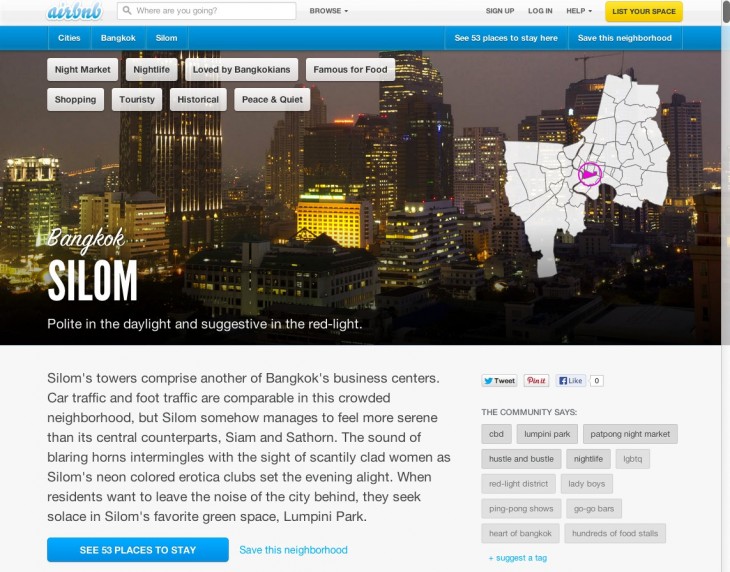
Airbnb is furthering its presence in Asia after it introduced its Neighborhoods feature to Bangkok, which becomes the first location in the region to fall under the company’s hyper-local spotlight.
The company launched Neighborhoods last November, and the feature is designed to allow travellers to get to know a city better, and more easily discover experiences and culture there. It — in theory — makes it easier for travellers to find the part of the city that appeals to them the most; because we’ve all had moments when we booked in to stay at the wrong part of town but didn’t realize until we got there.
As a result, Bangkok is now sub-divided into 19 different neighbourhoods. Each gets its own page which provides hyper-local details such as maps, photography, editorial, public transportations, tips from Airbnb hosts and — of course — properties that are available to rent.
Here is the page for Silom, for example, which is an important location for businesses during the day — and includes the city’s best park — but becomes a mecca for party-goers during the evening:
The addition of Thailand’s capital takes the Neighborhoods feature to 15 cities worldwide. Bangkok was chosen because it’s a hugely popular tourist destination — a recent MasterCard survey ranked it as the world’s most popular destination for travellers, for example — but we can expect the feature to roll out in more cities across Asia in due course.
Airbnb has included properties in Asia Pacific since its earliest days, but it zoomed in on the region when it launched local customer support presences in November 2012, to serve Australia, Thailand, Indonesia and Singapore.
CTO and co-founder Nathan Blecharczyk previously told TNW that the company is bullish on the potential for growth of Asia. Blecharczyk foresees the number of listings across the region tipping 2 million, and already it is seeing progress.
The company tells TNW that it now has 2,700 listings in Thailand, which is up from 1,300 in November. The number of listings across Southeast Asia has also grown from 6,000 to just over 10,000 during the same period.
Headline image via Thinkstock
Get the TNW newsletter
Get the most important tech news in your inbox each week.





